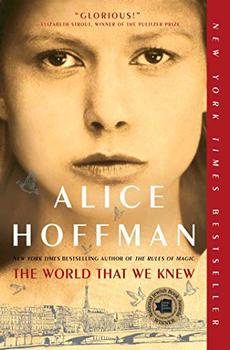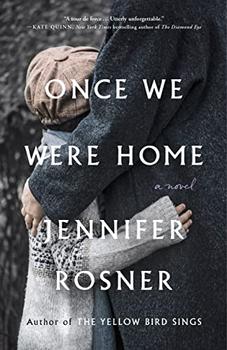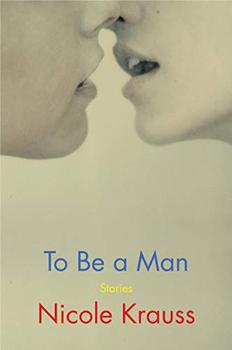Summary | Excerpt | Reading Guide | Reviews | Beyond the book | Read-Alikes | Genres & Themes | Author Bio

Alice Hoffman's sparkling prose and immersive descriptions of place summon readers into World War II. Chapters are place- and time-marked from 1941-1944, to guide readers through a suspenseful journey. Told by an omniscient narrator, the novel begins in Berlin, 1941, and swiftly moves to France, where Nazis control most of the territory including Paris. Typical of stories set during wartime, there is much death. Yet, the novel also flows with lyrical imagery, and flashes of magical realism are common. A few supporting characters—the Angel of Death, a heron, and a golem—reveal explicit magical powers, while the leads all have what I call "ordinary-super powers," exhibiting traits such as bravery under trying circumstances. As the plot unfolds, Hoffman chronicles many forms of resistance and develops a vivid cast of characters, most of them teens; they are often separated, but reconnect in unexpected, memorable ways.
Ettie, 17, German-born daughter of a rabbi, has one of the strongest arcs. Near the story's start she embraces prayer and sacred ritual to create a magical being from clay, a golem named Ava. She casts the golem spell in order to show off her intellect, and also to protect a neighbor's child, Lea, from Nazi forces. The pragmatic teen also bargains for jewels and two train tickets to Paris, intending to run away from Berlin with her little sister, Marta. Neither sister arrives to Paris. Marta is killed, and Ettie decides to seek revenge. She dedicates herself to the Resistance, and remains empowered by her faith.
Brothers Victor, 17, and Julien, 14, Lévi develop distinctly different qualities. Victor, physically strong and daring, runs away from his wealthy Parisian family to join friends in the Jewish Resistance. They use lessons from science class to build explosives and set traps for Nazis and the Milice (French militia collaborating with Nazis). Julien is the quieter brother, training to be a mathematician. His analytical skills prove useful in imagining strategies for escape and survival. When Julien finds temporary refuge in a boarding school for children whose parents were deported to Nazi camps, he tutors kids in math; he also turns to the arts for comfort and develops his own talents as an artist and writer.
Berlin-born Lea, by contrast, embodies heroic powers of endurance. From age 12, she faces trauma after her father is killed and a soldier assaults her. Lea's mother sends her away, to stay with relatives who might protect her in Paris. In order to survive, Lea invokes deep memories and the fables her mother, Hanni, and grandmother, Bobeshi, have often told her:
She understood her grandmother's stories. Demons were on the streets. They wore brown uniforms, they took whatever they wanted, they were cold-blooded, even though they looked like young men. This is why Lea must learn how to survive.
In Paris, Lea befriends Julien, who happens to be her distant cousin. Their friendship grows to love, and the power of love fortifies them, even as the plot thickens with danger.
Lea's plot involves many magical realist elements. Whenever she and Julien are separated, a magical heron carries messages and sketches between them, carrier-pigeon style. The heron is also devoted to Ava, the super-human golem created by Ettie's magical ritual to be Lea's guardian. Ava appears to be an ordinary woman; yet she can talk with birds and defeat enemies with a glance—or if that fails, with her physical strength. She is also a healer. Her entire destiny is to be a surrogate mother, protecting Lea and her allies. The relationship between Ava and Lea becomes especially complex and nuanced as the novel advances.
Marianne, a maid at the Lévi home in Paris, shares the other protagonists' fortitude. Early in the novel, she returns to her home in rural Haute-Loire to help her ailing father manage. Marianne's an expert in rural, earthy skills, able to make do with scarcity, to see in the dark, to navigate difficult terrain, to endure extreme weather. She's devoted to her father, and equally dedicated to the Allies when she joins the Resistance. Marianne's unique skillset allows her to help guide refugee children to safety in Switzerland. Marianne also embraces the power of love; she and Victor become lovers despite barriers of class and religion that might impede their affair if not for wartime.
Ordinary heroes are omnipresent in the novel, including priests, nuns, teachers, and farmers who shelter children and families on the run. Dr. Girard secretly passes messages between members of the Resistance, while also healing the sick and wounded. He mentors Ettie in both callings. I bonded with every character; of course, many don't survive.
Despite the painful wartime setting, full of sorrow and family separations, the beauty of Hoffman's prose and themes delivers a sense of hope. Even if humanity continues to engage in war and atrocity, the novel suggests, perhaps art, stories, and love can endure. There are parallels between the protagonists' bravery and today's wave of teen activism, for example, those committed to #UnitedWeDream or #MarchForOurLives and other global movements. Juxtaposing historical fact with a well-crafted story, The World That We Knew is sure to appeal to readers new to Alice Hoffman's work as well as her longtime fans.
![]() This review was originally published in The BookBrowse Review in October 2019, and has been updated for the
October 2020 edition.
Click here to go to this issue.
This review was originally published in The BookBrowse Review in October 2019, and has been updated for the
October 2020 edition.
Click here to go to this issue.

If you liked The World That We Knew, try these:

by Jennifer Rosner
Published 2024
From Jennifer Rosner, National Jewish Book Award Finalist and author of The Yellow Bird Sings, comes a novel based on the true stories of children stolen in the wake of World War II.

by Nicole Krauss
Published 2021
In this dazzling collection of short fiction, the National Book Award Finalist and New York Times bestselling author of The History of Love - "one of America's most important novelists and an international literary sensation" (New York Times) - explores what it means to be in a couple, and to be a man and a woman in that perplexing relationship and...
I find that a great part of the information I have was acquired by looking something up and finding something else ...
Click Here to find out who said this, as well as discovering other famous literary quotes!
Your guide toexceptional books
BookBrowse seeks out and recommends the best in contemporary fiction and nonfiction—books that not only engage and entertain but also deepen our understanding of ourselves and the world around us.